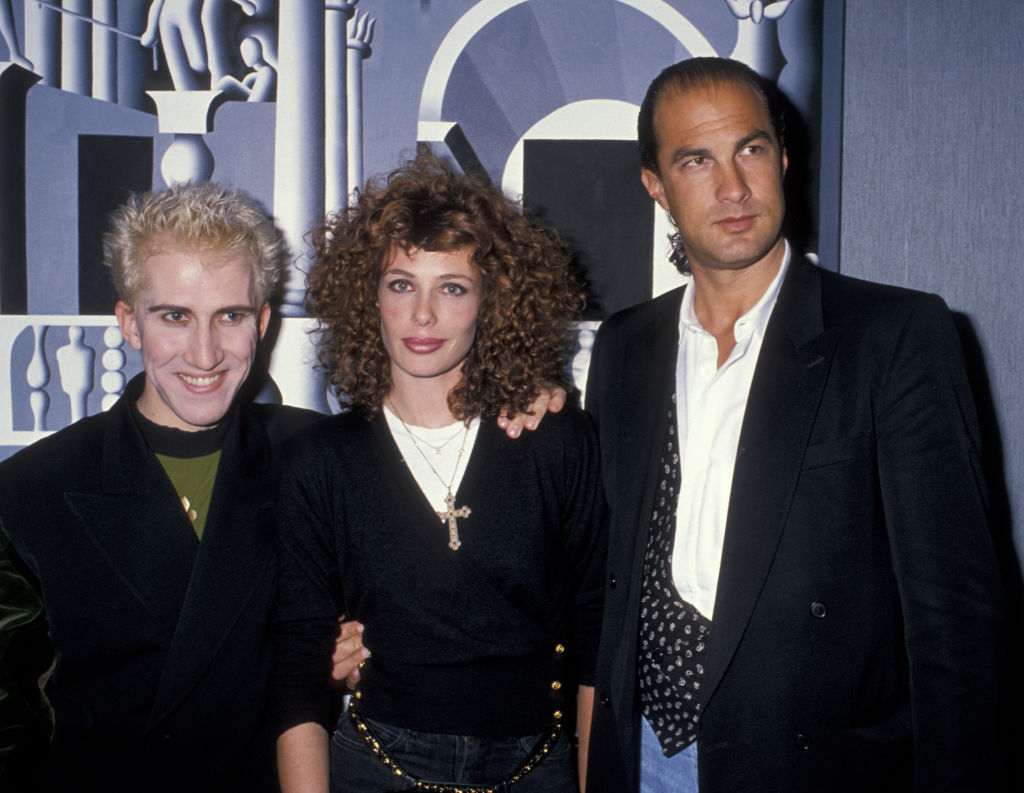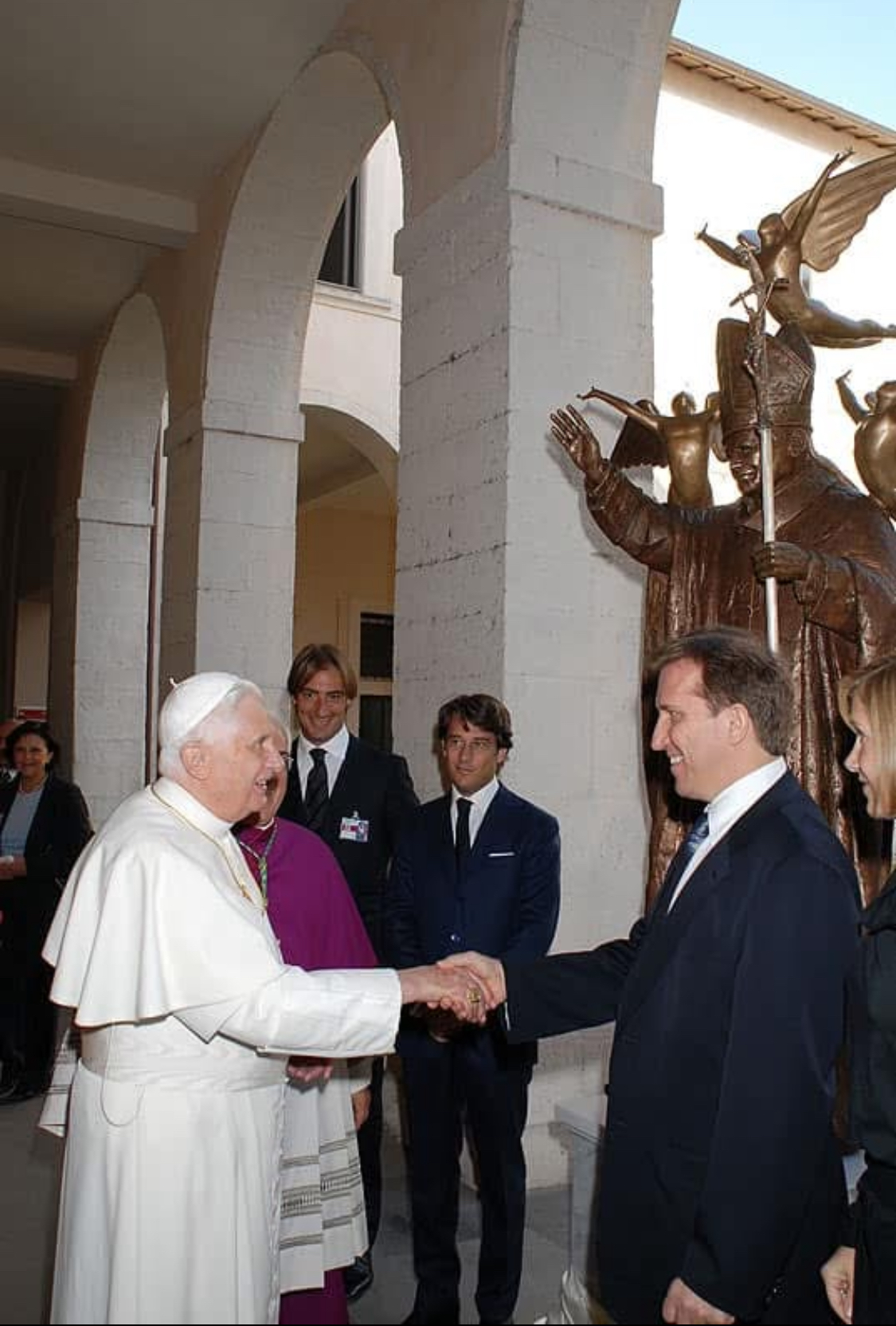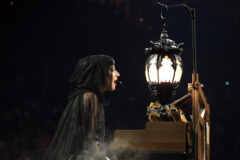One evening in the spring of 1985, as we were preparing our second issue (having, initially, seriously, forgotten we had to do that, so were now scrambling), I walked into Art Director George DuBois’s office and he was talking to a skinny, fresh-faced young man. “Look at these,” said George, handing me some paintings. I thought they were fantastic, such cool, colorful visuals of almost ethereal and faceless characters. We bought the rights to one for $50 to illustrate an article in the issue. We were the first magazine to publish Mark Kostabi.
Flash forward 40 years — if one can flash forward 40 years — and Mark is one of the most famous and successful painters on the planet, his big works sell for hundreds of thousands of dollars and even small canvases go for tens of thousands. He’s been exhibited in major art museums all over the world, and had countless coffee table books published, some of which you need a really sturdy coffee table for. And he once did a Guns N’ Roses album cover.

You were one of the bad boys of the art world in the mid-‘80s, along with Keith Haring and Basquiat. Did you know them well?
I knew them equally well. Maybe Basquiat a little more, though my art was more compared to Haring’s at the time because we both made simple line drawings of faceless figures.
In 1982, Alex Schwartzman at the Barbara Gladstone Gallery suggested I contact Keith. I visited him in his lower East Side studio. I showed him my line drawings and obviously he liked them because he recommended me to his dealer, Tony Shafrazi.
Tony liked to talk, a lot, as he still does. He told me art world stories and started to sell my self-published books of line drawings. Keith would show up with a new stack of Sumi ink drawings on large sheets of paper. They were selling for $900 each, the same types of drawings that currently sell for between $250,000 to $500,000 each.
I never became good friends with Keith. His then-collaborator Angel Ortiz, a.k.a. Little Angel, said it was because I didn’t do drugs and therefore not welcome in the group. Later, when I started getting a lot of press, Keith strangely turned on me. Maybe it’s because he never learned how to blend with oil paints and felt technically insecure as a painter.
Jean-Michel Basquiat was different. He never learned how to blend with oil paints either. But his understanding of mid-century painting was rich, and he knew how to intuitively utilize the composition and experimental techniques of Robert Rauschenberg, Cy Twombly, early Larry Rivers and Karel Appel with graffiti sensibilities to create a powerful visual identity.
In his teenage years, his art was not unlike typical comic book-inspired, high school surrealism, but he transformed into an extremely “art smart” contemporary painter, now considered equal to Picasso and Van Gogh in art market value.
When I visited his studio in 1986, while I was watching him paint, I made a drawing of him. When he saw my drawing, he asked me if I “always paint baldies” and then proceeded to add dreadlocks to my drawing of his bald head. He had dreadlocks at the time, but, interestingly, he used to be a skinhead.


You’ve always been a firm advocate that Warhol was a great painter, and I’ve never understood why. Why?
Two of my favorite artists, Caravaggio and Andy Warhol, have one thing in common: in a museum, where their work is included with their contemporaries, they always blow away all the other artists.
For example, go to the Vatican museum and in the large gallery where hangs Caravaggio’s The Raising of Lazarus, no other painting comes close in visual painterly sophistication. Same with Andy Warhol. In an installation along with other mid-century modern greats, Warhol’s wall power immediately dominates and makes everyone else look overworked or too sincere. Plus, as a painter who understands principles of painting, Warhol had a way of incorporating all those principles — chiaroscuro, sfumato, rhythm, surprising variety within rhythm, irony, historical significance and other things that are hard to explain with words, but painters understand. The best of Rauschenberg, Jasper Johns, Lichtenstein, De Kooning are equally great but Andy had a genius way of making it look so easy.
How do you see AI impacting the art world?
I am all for AI. I use it frequently, especially to provide titles for my paintings. The verbal prompts need to be good to get the title.
I have tried using AI for visual composition, but things usually come out too distorted. This will improve in the future. For now, I’ve learned if I use my imagery and ask AI to generate different backgrounds, it works.
If AI eventually develops and obliterates the human race, the human race probably deserves it.
When you started out, did you imagine that one day you’d be one of the most famous artists in the world, (and how much of that do you think is down to our publishing you in 1985?)
Since I was a teenager, I’ve always had as a goal to become a famous artist, so most of my life decisions have been in support of that. Certainly being published in SPIN in 1985 elevated me to a new national level of exposure, and it helped a lot. And I am eternally grateful and glad to be back!
Aren’t you and the [recently deceased] Pope BFFs? You’re like, always with him.
Well, that’s nice of you to say, but it’s not true. I only met him once, but I’m always with him in the photo of us.




